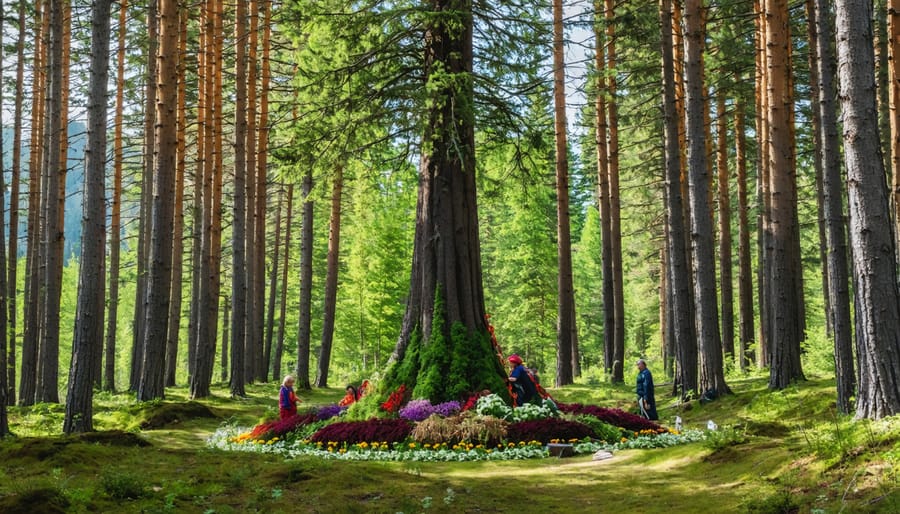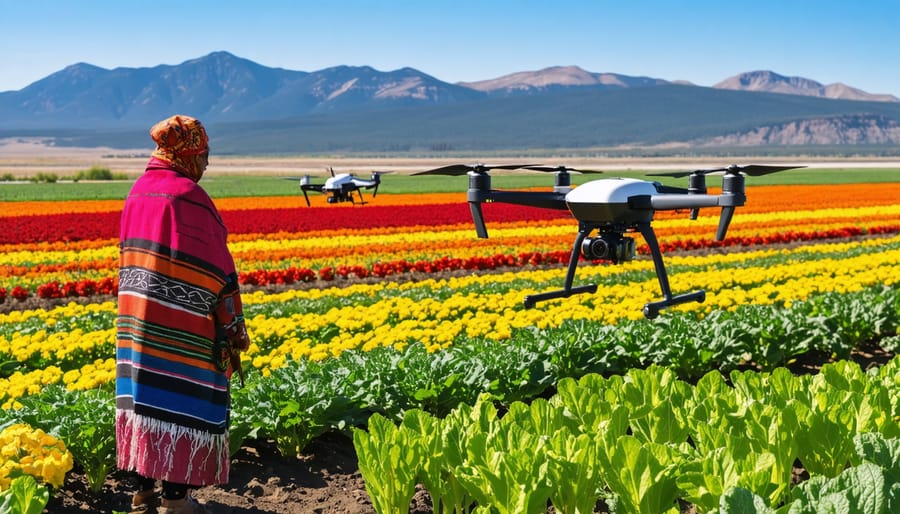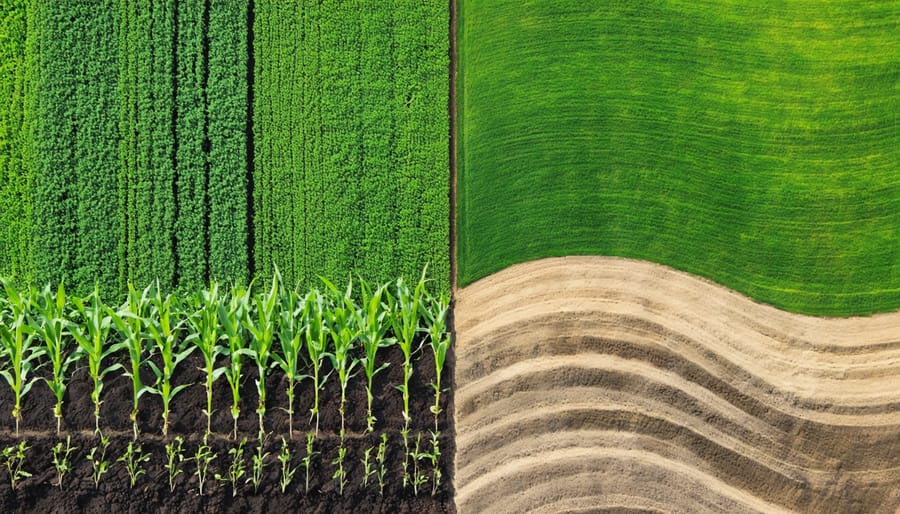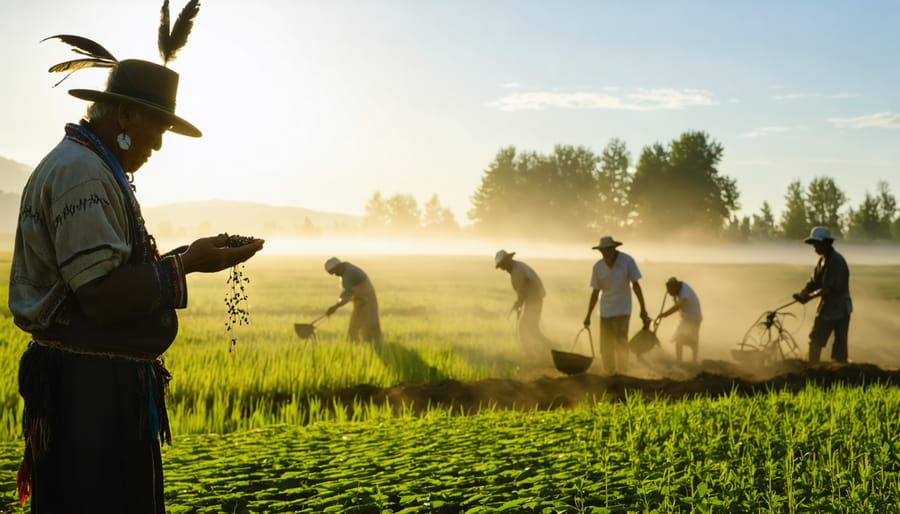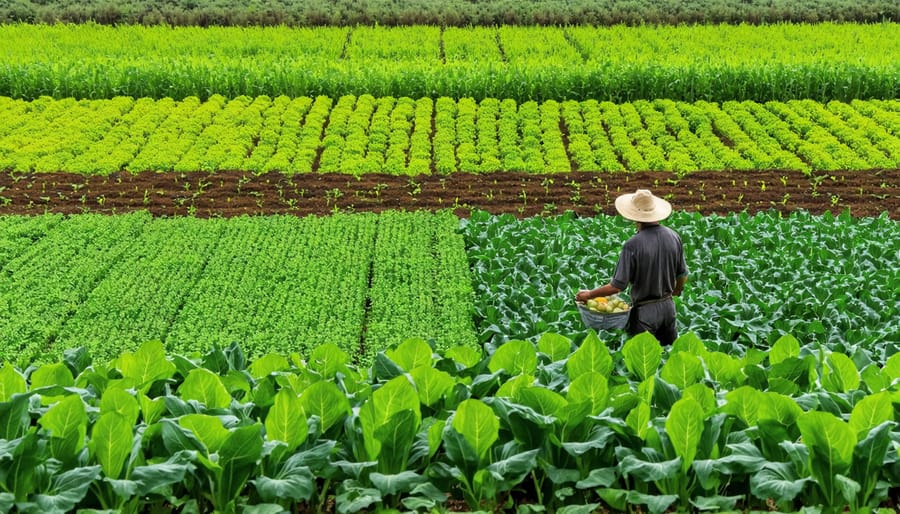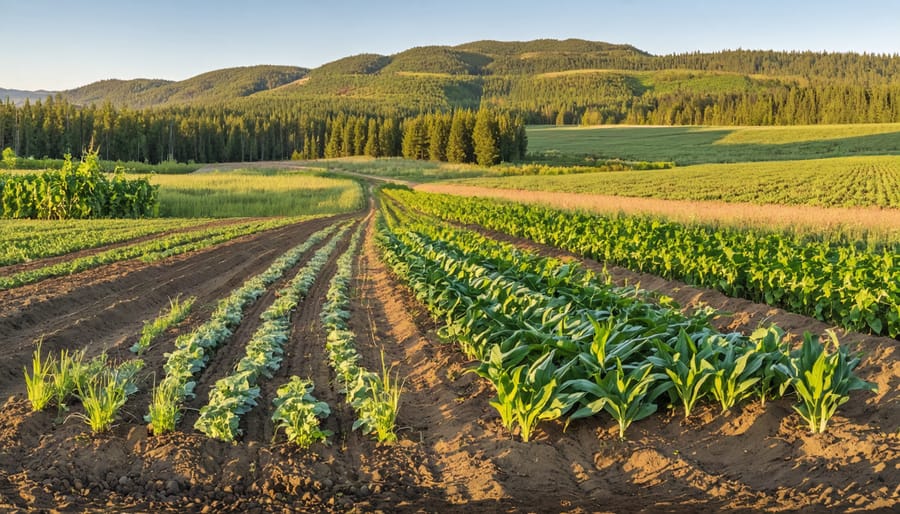Step into the ancient groves where agriculture meets spirituality, as we explore five sacred trees that have shaped sustainable farming practices for millennia. These living monuments, revered through Indigenous permaculture principles, offer more than just ecological benefits—they represent a profound connection between land stewardship and cultural wisdom.
From the towering cedar forests of coastal First Nations to the hardy oak stands of traditional European agriculture, sacred trees have long served as both spiritual anchors and practical resources for agricultural communities. These botanical elders teach us vital lessons about resilience, biodiversity, and sustainable resource management that remain remarkably relevant for modern Canadian farmers.
As Alberta’s agricultural landscape evolves to meet contemporary challenges, these sacred species offer innovative solutions for soil conservation, wildlife habitat preservation, and climate change adaptation. Their time-tested benefits—from nitrogen fixation to wind protection—demonstrate why incorporating traditional knowledge into current farming practices isn’t just about preserving heritage; it’s about building a more sustainable agricultural future.
Join us as we explore these remarkable trees that bridge ancient wisdom and modern farming techniques, providing practical solutions for today’s agricultural challenges while honoring the deep cultural connections that have sustained communities for generations.
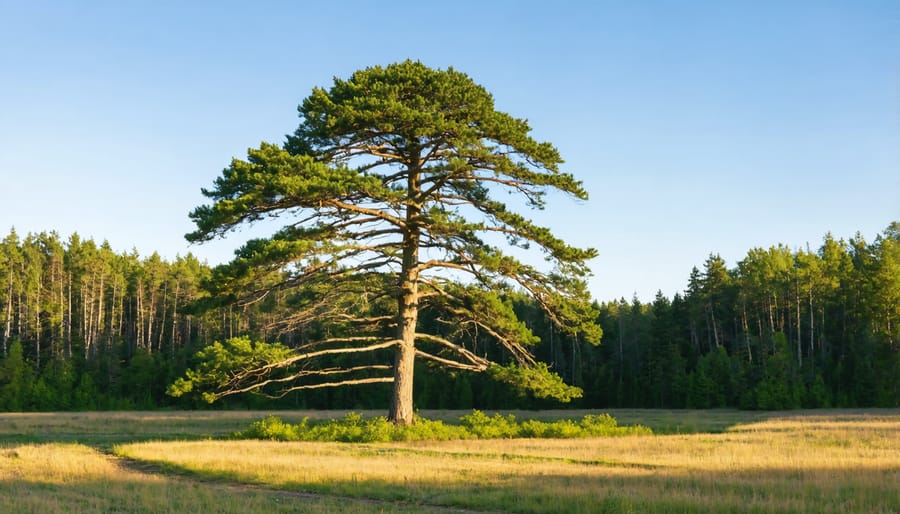
The White Cedar: Guardian of Eastern Canadian Forests
Traditional Growing Practices
Traditional growing practices for sacred trees emphasize harmony with natural cycles and sustainable cultivation methods. These time-tested approaches typically involve companion planting, where complementary species are grown together to enhance soil health and create beneficial microclimates. Indigenous communities have long practiced selective harvesting, ensuring that only mature trees are gathered while leaving enough for natural regeneration.
The planting process often follows lunar cycles, with seeds being sown during specific moon phases believed to enhance growth and vitality. Soil preparation includes natural amendments like wood ash and composted organic matter, promoting healthy root development without synthetic fertilizers. Many communities maintain buffer zones around sacred trees to protect their root systems and preserve the surrounding ecosystem.
Water conservation plays a crucial role, with traditional methods incorporating mulching techniques using local materials like straw and bark. These practices help retain soil moisture and suppress weed growth naturally. Knowledge keepers emphasize the importance of regular monitoring and maintaining spiritual connections with the trees through ceremonies and offerings.
These traditional methods not only ensure the trees’ survival but also contribute to biodiversity, soil health, and climate resilience. Modern agricultural studies have validated many of these ancestral practices, confirming their effectiveness in sustainable forest management and agroforestry systems.
Modern Applications
Today, these sacred trees play vital roles in sustainable farming systems across Canada. In Alberta, farmers are incorporating these traditional species into shelterbelts and silvopasture systems, helping to protect soil and enhance biodiversity. Several Indigenous-led agricultural projects have demonstrated how these trees can improve farm resilience while honoring traditional knowledge.
For example, the cedar is increasingly used in riparian buffer zones, where its deep root system helps prevent erosion and filters agricultural runoff. Maple trees are being integrated into multi-story agroforestry systems, providing both shade for understory crops and valuable sap products. The birch’s ability to improve soil health through mycorrhizal relationships has made it popular in regenerative agriculture practices.
Many Canadian farmers report that incorporating these sacred trees has led to increased crop yields and improved livestock health. Modern research supports these observations, showing that traditional agroforestry systems can increase farm productivity by up to 40% while reducing water usage.
Local agricultural cooperatives are now offering workshops on integrating these species into existing farm operations, combining traditional wisdom with modern farming techniques. This approach not only enhances environmental sustainability but also helps preserve important cultural heritage for future generations.
The Sacred Maple: Life-Giving Cycles
Seasonal Wisdom
Traditional wisdom from Indigenous communities has long guided the timing of agricultural activities through careful observation of these sacred trees. When Manitoba Maple buds begin to swell, it signals the last frost is approaching, typically around mid-April in southern Alberta. The White Spruce’s cone production offers valuable forecasting – abundant cones often indicate a harsh winter ahead, prompting farmers to prepare accordingly.
Cedar’s growth patterns serve as natural calendars, with new growth typically emerging when soil temperatures reach 10°C – ideal timing for spring planting. Elders share that when Cedar branches droop heavily with moisture, rain is imminent within 48 hours, allowing farmers to plan field operations effectively.
The Birch’s seasonal changes provide reliable indicators for both spring and fall activities. When Birch leaves reach the size of a loonie, conditions are typically right for seeding cold-weather crops. In autumn, the timing of Birch leaf drop helps predict the first killing frost, usually occurring within two weeks.
Watch for Oak leaves emerging in spring – when they’re the size of a squirrel’s ear, soil temperatures have typically reached 15°C, perfect for warm-season crops. These natural indicators, combined with modern weather forecasting, help farmers make informed decisions about planting and harvesting schedules.
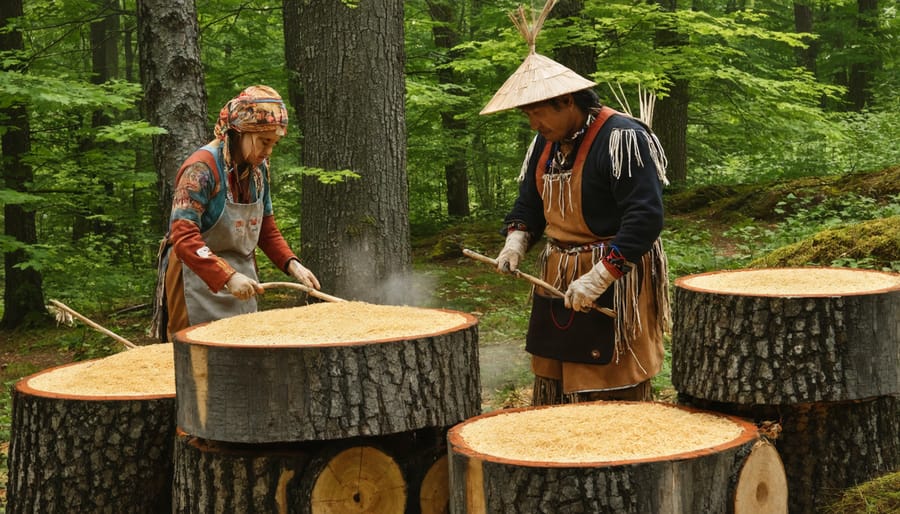
Companion Planting Benefits
When integrated thoughtfully into agricultural systems, these sacred trees create powerful synergies with other crops while improving overall soil health. Following traditional crop rotation practices, farmers across Alberta have found success pairing these trees with understory crops like saskatoon berries, chokecherries, and medicinal plants.
The deep root systems of these sacred trees help prevent soil erosion while increasing organic matter content. They create beneficial microclimates that protect sensitive crops from harsh winds and temperature extremes. Their fallen leaves contribute valuable nutrients to the soil, reducing the need for synthetic fertilizers.
Particularly effective combinations include planting nitrogen-fixing crops like beans or peas near these trees, which helps improve soil fertility naturally. The trees also provide habitat for beneficial insects and birds that help control pest populations, supporting integrated pest management strategies.
Many Alberta farmers report improved crop yields and soil quality within three to five years of implementing these companion planting techniques. The trees’ presence has been shown to increase soil moisture retention by up to 25% and organic matter content by 2-3% in adjacent growing areas.
The Oak: Community Builder
Ecosystem Services
Sacred trees play vital roles in maintaining healthy ecosystems, supporting diverse wildlife populations, and enhancing soil fertility. These living anchors create microhabitats that benefit numerous species, from beneficial insects to birds and small mammals. Their extensive root systems prevent soil erosion while facilitating nutrient exchange with surrounding vegetation through mycorrhizal networks.
Many of these trees naturally implement traditional pest management methods by attracting predatory insects that control harmful pests. Their canopies provide essential shelter for pollinators and birds, while fallen leaves contribute to rich organic matter that nourishes the soil.
In agricultural settings, these trees serve as windbreaks, moderate local temperatures, and increase moisture retention. Their presence can boost crop yields in adjacent fields by up to 20% through improved soil conditions and natural pest control. During extreme weather events, they act as buffer zones, protecting more vulnerable plants and helping maintain biodiversity in farming landscapes.
The deep root systems of sacred trees also aid in groundwater recharge and help filter agricultural runoff, contributing to better water quality throughout the ecosystem.
Traditional Management
Indigenous peoples have long maintained sacred relationships with oak trees through carefully developed management practices passed down through generations. These traditional approaches focus on sustainable harvesting and cultivation methods that ensure the trees’ long-term health while meeting community needs.
A key practice involves controlled burning, which Indigenous communities used to clear undergrowth and create optimal growing conditions for oak saplings. This technique, known as cultural burning, helps prevent destructive wildfires while promoting new growth and maintaining forest health.
Harvesting protocols include specific timing for acorn collection, typically in early fall before the first frost. Traditional knowledge dictates gathering only what’s needed, leaving plenty for wildlife and natural regeneration. Communities often designate certain trees as seed sources, protecting them from harvest to ensure genetic diversity.
Pruning practices follow lunar cycles, with specific ceremonies accompanying major management activities. Knowledge keepers teach that talking to the trees and offering tobacco or other traditional gifts before harvesting helps maintain spiritual connections and ensures respectful stewardship.
Today, many Indigenous communities continue these practices, often integrating traditional knowledge with modern conservation techniques to preserve these sacred trees for future generations.
The Sacred Pine: Forest Garden Anchor
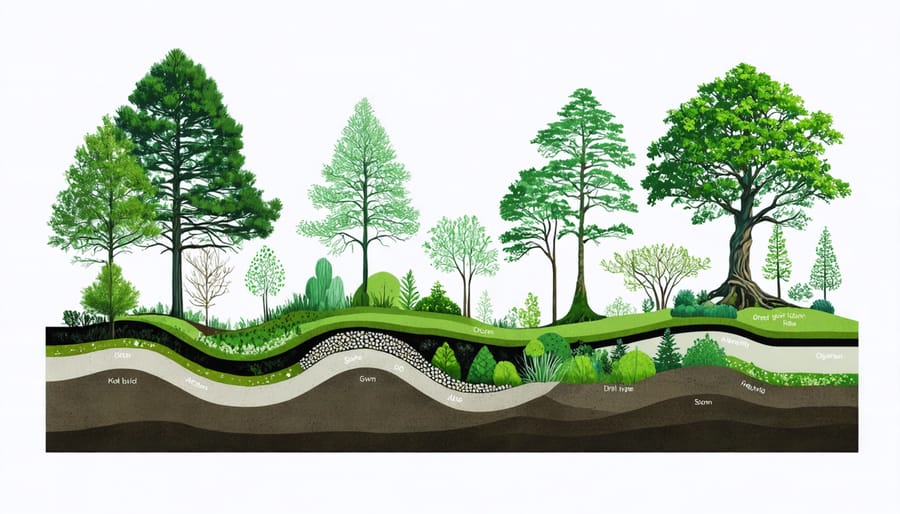
Soil Enhancement Techniques
Pine needles and bark have long served as valuable soil amendments in traditional Indigenous agricultural practices. When composted properly, pine needles create a nutrient-rich mulch that gradually releases essential elements while improving soil structure. This technique, often combined with Indigenous water management techniques, helps maintain optimal soil moisture levels throughout Alberta’s varying seasons.
To enhance soil quality, collect fallen needles in autumn and layer them with other organic materials in a 3:1 ratio. The decomposition process typically takes 4-6 months, creating a slightly acidic mulch perfect for acid-loving plants. Many Alberta farmers have successfully integrated this method, reporting improved soil structure and reduced water requirements.
Pine bark, when shredded and aged, serves as an excellent soil conditioner. It increases organic matter content and improves drainage in heavy clay soils common across the prairies. The slow decomposition rate of pine materials ensures long-lasting benefits, making it a sustainable choice for both small-scale gardens and larger agricultural operations.
Modern Conservation
Today, Indigenous communities and conservation organizations across Canada are working together to protect and maintain sacred pine stands through innovative management practices. The Stoney Nakoda First Nation in Alberta has established a successful pine conservation program, combining traditional knowledge with modern forestry techniques to ensure these cultural keystone species continue to thrive for future generations.
Several initiatives now focus on documenting traditional management methods while adapting them to present-day challenges. In British Columbia, the First Nations Forestry Council has developed guidelines for sustainable pine harvesting that respect both ecological needs and cultural practices. These efforts include seasonal harvesting rotations, careful selection of mature trees, and replanting programs that maintain genetic diversity.
Research partnerships between Indigenous knowledge keepers and forestry scientists have led to improved understanding of how traditional practices can enhance forest resilience. Many communities now maintain seed banks and nurseries dedicated to preserving sacred pine varieties, while educational programs teach youth about their cultural significance and proper management techniques. These conservation efforts demonstrate how traditional wisdom and modern science can work together to protect our natural heritage.
The Birch: Medicine and Agriculture
Agricultural Applications
Traditional Indigenous farming practices have long recognized the agricultural value of sacred trees, particularly in the Alberta region. Birch trees, for example, play a crucial role in natural soil improvement and water management. Farmers report that birch leaves, when composted, create nutrient-rich soil amendments that enhance crop yields naturally.
In modern agroforestry systems, these sacred trees serve as windbreaks, protecting vulnerable crops and reducing soil erosion. Local farmers have successfully integrated birch trees into their field margins, noting improved moisture retention and increased biodiversity. The trees’ extensive root systems help prevent soil compaction and improve drainage, particularly beneficial during Alberta’s wet seasons.
Many Alberta farmers have adopted traditional spacing techniques, planting birch trees approximately 6 metres apart to maximize their beneficial effects while minimizing competition with crops. The trees’ natural shedding cycle provides organic matter throughout the growing season, contributing to soil health without additional input costs.
Additionally, these trees support beneficial insects and pollinators, creating a more resilient farming ecosystem. Several local organic farms have reported increased yields after incorporating sacred trees into their agricultural planning, demonstrating the continued relevance of traditional knowledge in modern farming practices.
Sustainable Harvesting
Modern sustainable harvesting of sacred trees combines traditional Indigenous knowledge with contemporary conservation practices. In Alberta, farmers and Indigenous communities collaborate to establish guidelines that respect both cultural significance and ecological balance. For example, the harvesting of paper birch bark follows specific seasonal timing, typically in spring when the bark naturally separates from the tree, ensuring minimal damage to the living tissue.
Local initiatives encourage selective harvesting methods, where only mature trees are chosen and proper tools are used to collect materials. Traditional ceremonies often precede harvesting, acknowledging the tree’s spirit and requesting permission – a practice that naturally limits over-collection and promotes mindful resource use.
Many Canadian farmers have adopted the “three-to-one” principle, planting three new sacred trees for every one harvested. This approach, inspired by Indigenous teachings, ensures long-term sustainability while maintaining cultural practices. Several Alberta-based agricultural cooperatives now offer workshops on sustainable harvesting techniques, combining Elder knowledge with modern forestry practices to create effective management strategies that benefit both the land and future generations.
As we reflect on the profound wisdom held within Indigenous knowledge of sacred trees, it becomes clear that these traditional practices offer valuable solutions for modern agricultural challenges. The deep understanding of these five sacred trees, passed down through generations, represents more than just cultural heritage – it provides a blueprint for sustainable farming that can help Alberta’s agricultural community thrive while protecting our environment.
By incorporating these time-tested approaches into current farming practices, we can create more resilient and productive agricultural systems. The traditional methods of managing and harvesting these sacred trees demonstrate how careful stewardship can yield both environmental and economic benefits. From soil enrichment to natural pest control, these ancient techniques align perfectly with modern sustainable agriculture goals.
For Alberta’s farming community, preserving and implementing this knowledge isn’t just about honoring Indigenous traditions – it’s about securing our agricultural future. As climate challenges intensify, these traditional practices offer proven strategies for adaptation and sustainability. By working together with Indigenous knowledge keepers and combining their expertise with contemporary farming methods, we can develop more effective and environmentally conscious agricultural practices.
Let’s commit to protecting and learning from this valuable knowledge. Through respectful collaboration and open dialogue between Indigenous communities and farmers, we can ensure these sacred trees continue to benefit future generations while building more sustainable and productive agricultural systems across Alberta.

